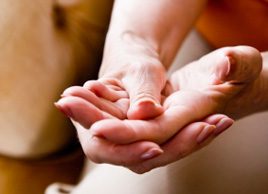Arthritis: Your guide to treatments that work
Looking for relief from arthritis pain? Here’s your guide to what works

Source: Excerpted from “Your Health: What Works, What Doesn’t”
Osteoarthritis is to older adults what ear infections are to children: common, frustrating, painful, a rite of passage. Except that people don’t grow out of arthritis’they grow into it. Genes play a role in causing joint-cushioning cartilage to break down, but past injuries, too much or too little exercise, and even a crooked gait can speed up the destruction. There’s no cure yet for osteoarthritis, but research is zeroing in on what brings relief.
Here are a few treatments to try.
Acetaminophen
Cheap, relatively safe when taken as directed, and with little risk of causing gastrointestinal bleeding the way other painkillers can, acetaminophen should be your first choice for treating mild to moderate arthritis pain. One review of seven trials found that people taking acetaminophen scored about four points lower on a pain scale than those taking placebos’a statistically significant difference. Meanwhile, evaluations of studies comparing acetaminophen with aspirin found that both provided similar pain relief, though ibuprofen appeared to work better than either. Acetaminophen is less likely than aspirin, ibuprofen, or naproxen to cause stomach bleeding, however. Doses up to 4,000 milligrams a day may be safe in people who don’t have kidney or liver damage, but talk to your doctor first, as taking too much acetaminophen does have the potential to cause problems over time.
Acupuncture
The simple act of inserting a needle into the skin and underlying tissue of your knee can help relieve the pain of arthritis. Over and over again, whether researchers were comparing real acupuncture to fake acupuncture or even to conventional arthritis treatments, they found that the ancient Chinese treatment not only relieved pain but in some instances also improved joint function. For instance, in one study, 283 participants received either education about arthritis or 26 weeks of either fake or real acupuncture. Those who received the real thing improved 23 percent more on pain scores, 150 percent more on physical function scores, and 74 percent more on their overall ability to function compared with the other groups.
Devil’s Claw
This anti-inflammatory herb seems to work similarly to prescription painkillers known as COX-2 inhibitors, such as celecoxib (Celebrex). However, they don’t have the potential COX-2 inhibitor side effects, including increased risk of ulcers, stomach pain, and heart attack. Studies in which participants took a daily dose containing 60 milligrams of harpagoside (the active ingredient in devil’s claw) found the herb helped reduce the pain of arthritis in the hip, knee, and spine.
Weight Loss
Losing weight is one of the best things you can do in terms of both preventing arthritis and reducing the pain, swelling, and disability it causes. That’s because excess weight puts excess pressure on joints. It doesn’t take much weight loss to see your condition improve: Each pound of weight you lose reduces the stress on your knees by 4 pounds. In one major study, it took only about a 10 percent weight loss (that’s 18 pounds if you weigh 180) to significantly improve participants’ knee and hip function. For instance, they were able to walk farther in six minutes and climb stairs faster than those who didn’t lose the weight.
Corticosteroid injections
Injecting corticosteroids directly into an arthritic joint helps reduce pain and stiffness by reducing inflammation. An analysis of 10 studies found that people who received the injections were 66 percent more likely than a control group to have less pain and greater function in their arthritic knees up to 24 weeks after the treatment. Similar positive results have been documented for shoulder injections.
While these shots can relieve underlying inflammation that’s responsible for the pain, they can’t do anything to improve the bottom-line cause of the pain ‘ that degenerating cartilage. And their effects are generally short-lived. They also have to be used judiciously, since long-term use can lead to thinning skin, weight gain, facial puffiness, increased blood pressure, cataracts, and osteoporosis.
Exercise
No matter how hard it is or how much it hurts initially, you need to get out there and move if you want to improve your joint function. Study after study shows that exercise is an important and successful therapy for relieving the pain and limited function that arthritis can cause.
Which exercise is best? The smart approach’endorsed by most doctors, arthritis organizations, and researchers’is a gentle mix of three types.
‘ Range of motion exercise like stretching and dancing to help maintain your joints’ full range of motion and flexibility’
‘ Strength exercise to keep the muscles that protect and support your joints strong’
‘ Aerobic or endurance exercise to control weight, reduce inflammation and maintain joint function. Ideally you should start by working with a physical therapist or trainer who understands arthritis and can develop a program tailored for you.
Capsaicin cream
Capsaicin is the substance that gives hot peppers their bite. As an ingredient in a cream to rub over painful joints, it can also relieve your arthritis pain. One study randomly assigned people with arthritis to receive either the real thing or a placebo cream. They graded their own levels of pain and stiffness the week before the treatment started, then applied the cream daily for 28 days, ranking their pain and stiffness over time. The results: Pain levels dropped by about 16 percent in the placebo group but by 77 percent in the capsaicin group, with major differences beginning in the second week. Even better, stiffness fell by 18 percent in the placebo group but by about 86 percent in the capsaicin group, beginning the first week. Interestingly, another study found that even if researchers told patients that capsaicin was less effective than other medicines, patients still preferred the cream to any other pain relief option. The main reason? Fewer side effects.




